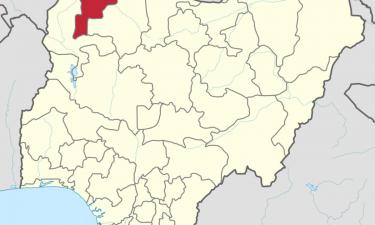To Space without Rockets - 2 November, 2002 - News
Since ancient times, people have been dreaming to fly to space, to reach the Moon, to look at stars from a shorter distance
This dream became realized after rockets were invented. Though to fly by rockets is a very expensive “pleasure.” To supply one kilogram of load to space costs $ 20,000. While taking into account spillover cost for human life support in space, the flight becomes several times more expensive. The first space tourists paid 20 million dollars for his flight. Not everybody can afford it, however everybody wants to fly.
Scientists consider the issue of reducing flight expenses. Though, rockets fully exhausted their reserves, and there are no prospects.
The former USSR citizen, doctor of technical science Alexandr Bolonkin, who was expelled from the USSR for their seditious ideas as for bettering living standard of Soviet people, at the 2002 World Congress (Newstone, USA) offered a series of brilliant ideas: to launch loads, space ships, labs, and thousands of tourists to space without rockets. To describe all these projects, including flights to the Moon, Mars and more allocated planets, a big book is necessary.
I would like only to shortly tell you about one variant of this brilliant idea by Bolonkin presented at the congress (totally, 9 his reports were accepted – this is a kind of record, for the congress usually accepts not more than only one report, sometimes – two). There is a film about an Indian magician who comes in a desolate village, invites local dwellers to a meadow, gives them a cord to touch, then flips it, and it stands vertically. A boy climbs up and descends, then the magician pronounces a conjuration, and the cord falls on earth. Many of us would say – this is a trick. Though, every trick cannot evade physical laws. If David Copperfield shows his tricks only at the stage, everybody understands he uses thin firm threads and special light to mask them. While here, an “illiterate” magician shows his art in an open area and spectators sit at a distance of several metres from this magic cord.
I asked many scientists how to explain this trick with physical laws. Nobody of them could say anything intelligible. They preferred to refer to hypnosis: the cord and the boy were on earth. Though, we see the video-record of an independent western journalist: video-camera cannot be hypnotised.
Alexandr Bolonkin also thought about this trick, and finally offered an idea about how to make the cord go up to space, and, moreover, lift necessary loads to a great height or even flip them very fast, if necessary.
No, this is not a well-known space elevator (however, Alexandr invented an original transport system for it). The idea of the space elevator is very old and very simple. Probably, everybody, being a child, tried to untwist with hands a small load on a cord. In the space elevator, the hand is the revolving Earth, while the load is the ballast on the rope. One could get up to space by this rope.
Though, it is not so simple, in fact. The space elevator needs a rocket to be created, to flip hundreds of tons of ballast load to a giant height (over 100 thousands kilometres!).
For these aims, thousands tons of the “rope” are necessary, which is not being produced by industry and costs millions dollars for one kilogram. There are many other problems. For example, where people can get and how will they transmit great energy to the load, which is necessary to raise the load. (This problem was also solved by A. Bolonkin). So, if scientists even admit such a space lift could be created, they call terms of 50-100 years.
The idea of Bolonkin is easy. Shortly, it could be described in this way. Bolonkin takes a rope, links it as a ring of changeable diameter and untwists it until it starts to spin with a high velocity in vertical plane. When centrifugal force keeps the rope, its diameter increases till the necessary size. With corresponding velocities and size (the theory of calculation, created by Bolonkin), this ring is able to raise tons of load to heights of hundreds of kilometres and accelerate satellites to space velocities. Of course, specialists could at once ask many what, how and why. All these questions should be addressed only to the author and his report at the World Congress “Transport System for Transporting Tourists to a Height of 140 Kilometres”. The question is about a cheap system, which consists of the rope, ground engine, and cabins: this would allow to transport 800 people to space every day.
Boris Kruglyak, Doctor of Technical Science, USA Specially for PRAVDA.Ru
Translated by Vera Solovieva
Subscribe to Pravda.Ru Telegram channel, Facebook, RSS!




